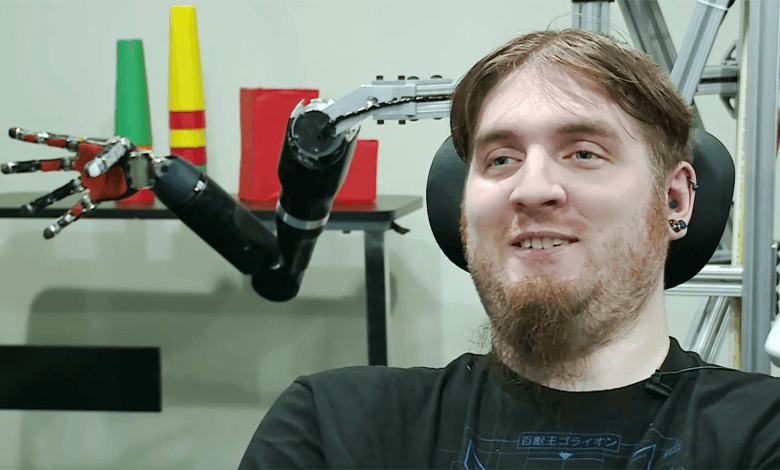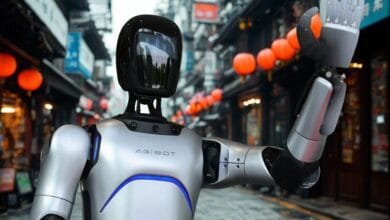Neuralink’s Thought-Controlled Arm: Sci-Fi No More

Neuralink, co-founded by Elon Musk, is redefining the limits of what’s possible in brain-computer interface (BCI) technology, aiming to bridge the gap between human cognition and machine control. Its latest developments include a feasibility trial for integrating the N1 implant with a robotic arm, marking a significant step toward restoring physical autonomy for individuals with severe mobility impairments.
Neuralink’s Groundbreaking Steps in Brain-Computer Interface Research
Neuralink has been making waves with its ambitious efforts to bridge the gap between technology and human neurological function, recently gaining attention for its FDA-approved human trials and the successful pairing of a brain-computer interface with a robotic arm, promising unprecedented autonomy for individuals with mobility challenges. The recent implantation of its brain-computer interface (BCI) into a second human participant has cemented its position at the forefront of neurotechnology innovation. This article delves into the progress, challenges, and future vision of Neuralink, as the company continues its journey towards redefining human-machine integration.
Chronology of Neuralink’s PRIME Study
May 2021
Neuralink gained FDA approval to begin human trials after years of preclinical research and development.
January 2024
The first human patient, Noland Arbaugh, received the Neuralink implant. Arbaugh, a quadriplegic, shared his experience of newfound independence, describing how he now controls a computer cursor using only his thoughts.
August 2024
Elon Musk announced on a podcast with Lex Fridman that the second human implant was successfully completed. Musk stated, “I don’t want to jinx it, but it seems to have gone extremely well,” emphasizing the robust performance of the device.
November 2024
Neuralink launched a trial to pair the N1 implant with an assistive robotic arm. This new phase aims to extend BCI applications from digital interactions to physical assistance. The robotic arm, controlled entirely by neural intent, offers individuals the ability to perform actions without any physical movement, providing a transformative level of independence for those with limited mobility.
Looking Ahead to 2026
Musk has set an ambitious goal of scaling the program to over 1,000 human participants within the next two years, reflecting the company’s drive to make this technology widely accessible.
Patient Perspectives: A Transformative Journey
For Arbaugh, the first recipient of the Neuralink implant, the experience has been life-changing. Speaking about his new ability to interact with technology, he expressed hope for greater independence and a renewed sense of purpose. “For the first time since my accident, I feel empowered to contribute to my family’s financial support,” Arbaugh shared during a Neuralink-hosted Q&A.
Technological Precision: The Role of Robotics
The implantation process is executed by Neuralink’s state-of-the-art surgical robot. Designed to insert ultra-thin electrode threads into the brain with unparalleled precision, this method minimizes risks while maximizing the device’s efficacy. Dr. Matthew McDougall, Neuralink’s lead neurosurgeon, explained, “Our robotic system is a breakthrough in neurosurgery, offering precision that is impossible with traditional methods.”
The robotic arm integration trial highlights the versatility of the N1 implant. The implant captures neural signals and translates them into actionable commands, enabling users to control the arm with thought alone. This breakthrough demonstrates the potential for extending BCI applications from digital interactions to physical assistance, giving individuals a new level of autonomy.
In parallel, Neuralink’s robotic arm trial demonstrates cutting-edge engineering. The arm integrates advanced sensors and actuators to replicate fine motor movements, ensuring precision in executing tasks. Such technology not only enhances the independence of users but also showcases how robotics can interface seamlessly with neural inputs.
Insights from Elon Musk
Musk has been vocal about Neuralink’s potential to revolutionize healthcare and human capabilities. “The brain is the last frontier we’ve yet to fully explore,” he said. “This technology can unlock capabilities that seemed like science fiction just a decade ago.” He also highlighted Neuralink’s broader vision, including applications in restoring vision, hearing, and other neurological functions in the future.
Challenges and Long-Term Potential
While the recent developments are promising, Neuralink’s technology remains in its early stages. Regulatory hurdles and the need for extensive testing mean that commercial availability is still years away. However, the advancements underscore the company’s commitment to revolutionizing assistive technology.
Industry experts note that Neuralink’s integration of BCI with physical devices like robotic arms could redefine mobility solutions. Dr. Samantha Reed, a neuroscientist not affiliated with Neuralink, commented, “This trial has the potential to bridge the gap between brain activity and mechanical function, which is an extraordinary achievement in neurotechnology.”
At the same time, Neuralink is addressing practical challenges such as ensuring the durability of implants and maintaining neural thread functionality over long periods. The success of the robotic arm trial will likely serve as a benchmark for future neurotechnological endeavors.

Future Vision: Beyond Clinical Trials
Neuralink’s primary focus remains on assisting individuals with severe disabilities, but its long-term vision extends far beyond, hinting at applications like cognitive enhancement and direct AI integration to reshape human interaction with technology. Musk envisions a future where brain-computer interfaces enable seamless interaction with artificial intelligence. “The ultimate goal is symbiosis with AI,” Musk has said, hinting at applications ranging from cognitive enhancement to tackling neurological disorders.
A Paradigm Shift in Neurotechnology
Neuralink’s achievements mark a significant step forward in brain-computer interface technology. With each successful implant, the company moves closer to realizing its vision of transforming lives through technology. As the PRIME Study progresses and the robotic arm trial advances, it continues to capture global attention, offering a glimpse into a future where the boundaries between humans and machines blur.
Neuralink’s progress in 2024 showcases its ambition to redefine assistive technologies. The robotic arm trial exemplifies the practical possibilities of brain-computer integration, moving from digital control to tangible physical assistance. While challenges remain, the company’s advancements are a testament to its innovative approach and commitment to improving lives.
Through its ongoing trials and visionary goals, Neuralink stands poised to redefine how humans interact with technology, bringing science fiction closer to reality.






